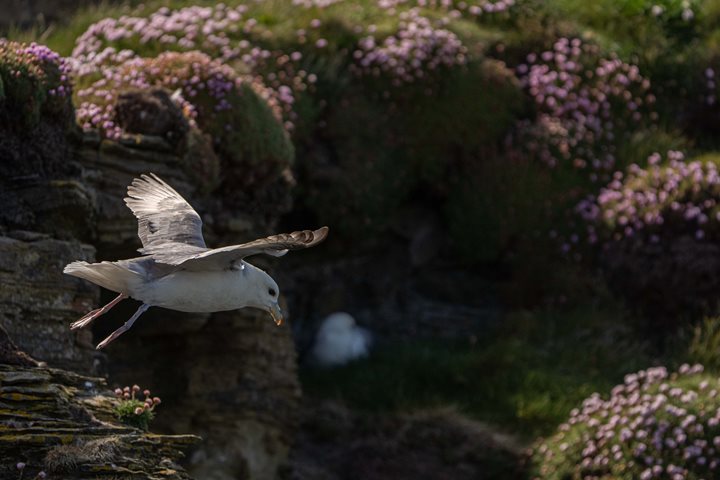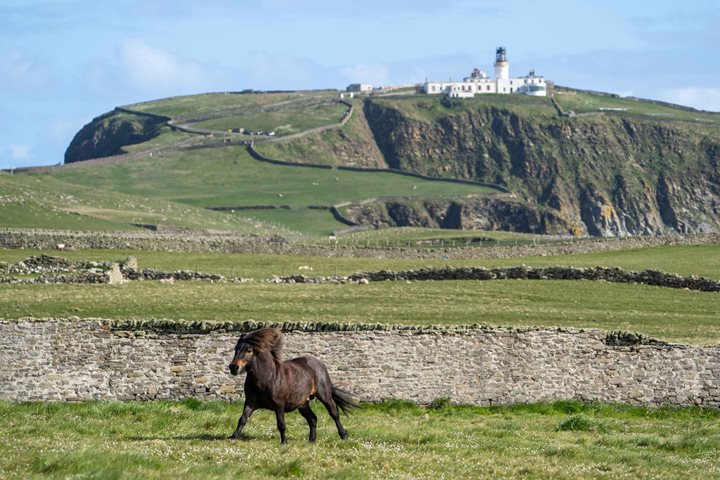A trip out to St. Kilda cannot be guaranteed at any time of year. There is no ferry service to the farthest west of the Hebridean islands, and a wide stretch of open Atlantic makes both passage and landings on the island problematic. So, we were truly blessed with a cloudless sky, wonderful visibility, and calm seas for our visit to an amazing island that was continuously occupied for millennia, from the Bronze Age to the 20th century.
The last St. Kildans were evacuated, at their own request, in 1930, and today the island has a small population of Ministry of Defence personnel as well as seasonal staff and volunteers from the National Trust for Scotland (NTS) who now own the island. Ownership and management by the NTS derive from the island’s unique heritage in cultural and natural history.
Natural history in the form of significant colonies of Atlantic seabirds on the high eastern cliffs and outlying stacks was apparent on arrival. Gannets, fulmars, kittiwakes, and guillemots—once a vital source of food for the islanders— were in abundance. For an island population that never developed a money economy, rent was paid to the Macleods of Dunvegan on the Isle of Skye in the form of fulmar feathers, collected by the landlord’s agent or factor from a substantial storehouse that we visited. The island is also home to the delightful St. Kilda wren, somewhat larger that its mainland cousins and happily nesting in the drystone walls that characterize the village settlement.
The weakening and eventual demise of such an ancient community is sad story. Tourists arriving on steamer trips from Glasgow paid islanders to have their photos taken from the 1880s onward, which brought money that could be exchanged for canned food. A strict Sabbatarianism that came with the introduction of compulsory schooling for the island’s children also had its effect, disrupting the flexible work practices necessary for agriculture in such an exposed location. The new housing that the Macleods of Dunvegan were shamed into providing for the islanders looked better to the visiting tourists but were less comfortable than the traditional black houses that were vacated. High infant mortality, influenza epidemics, and the hemorrhaging of young people led to the island becoming unviable.
In the evening, we headed back to the Isle of Lewis. By glorious evening sun, we went ashore to the small village of Callanish. A short walk up the hillside led us to a spectacular scene—the standing stones erected by Bronze Age settlers, thousands of years ago. With a huge, full moon hanging in the air, the quiet murmur of people and birds, the site had an almost ethereal quality.









